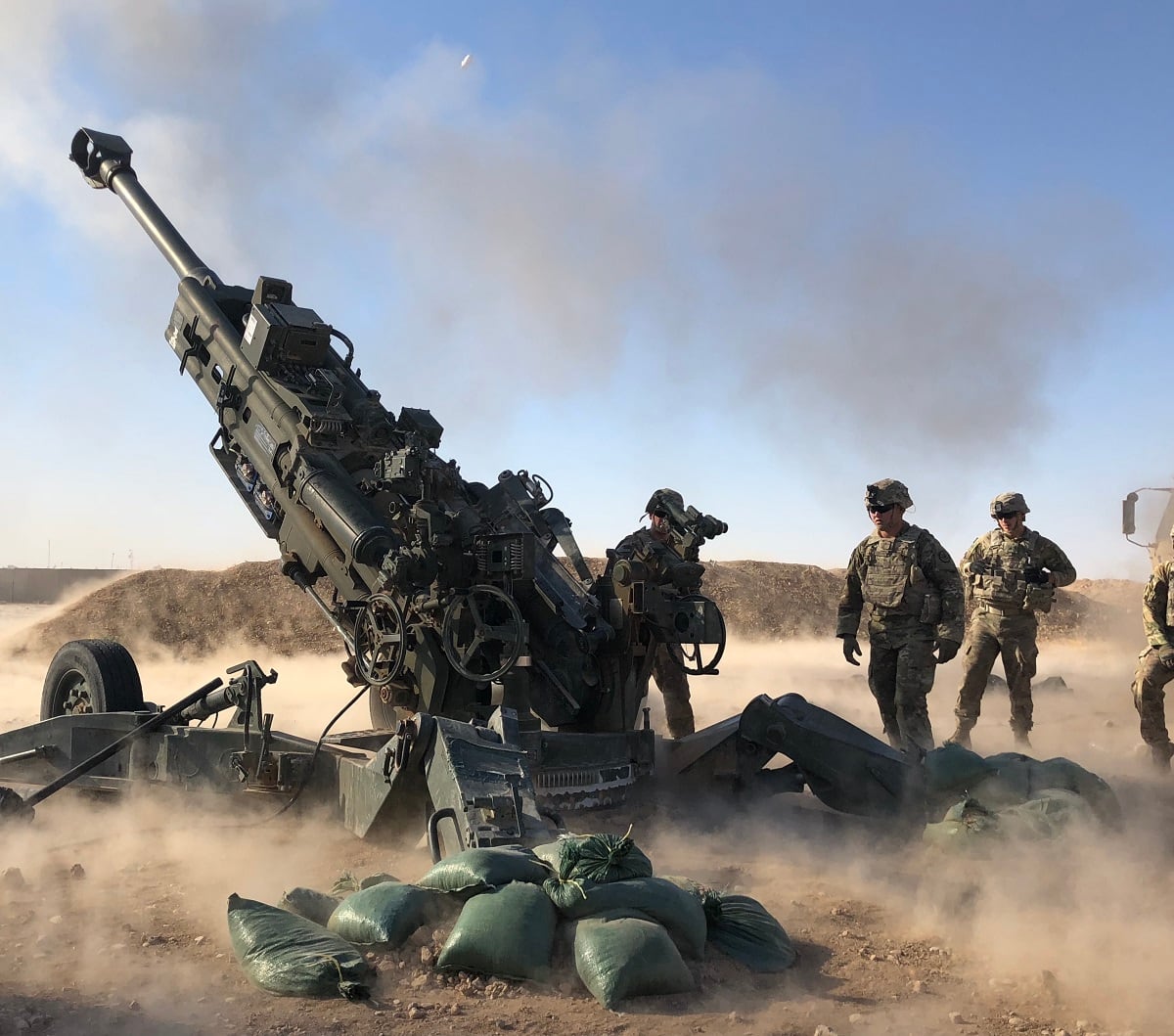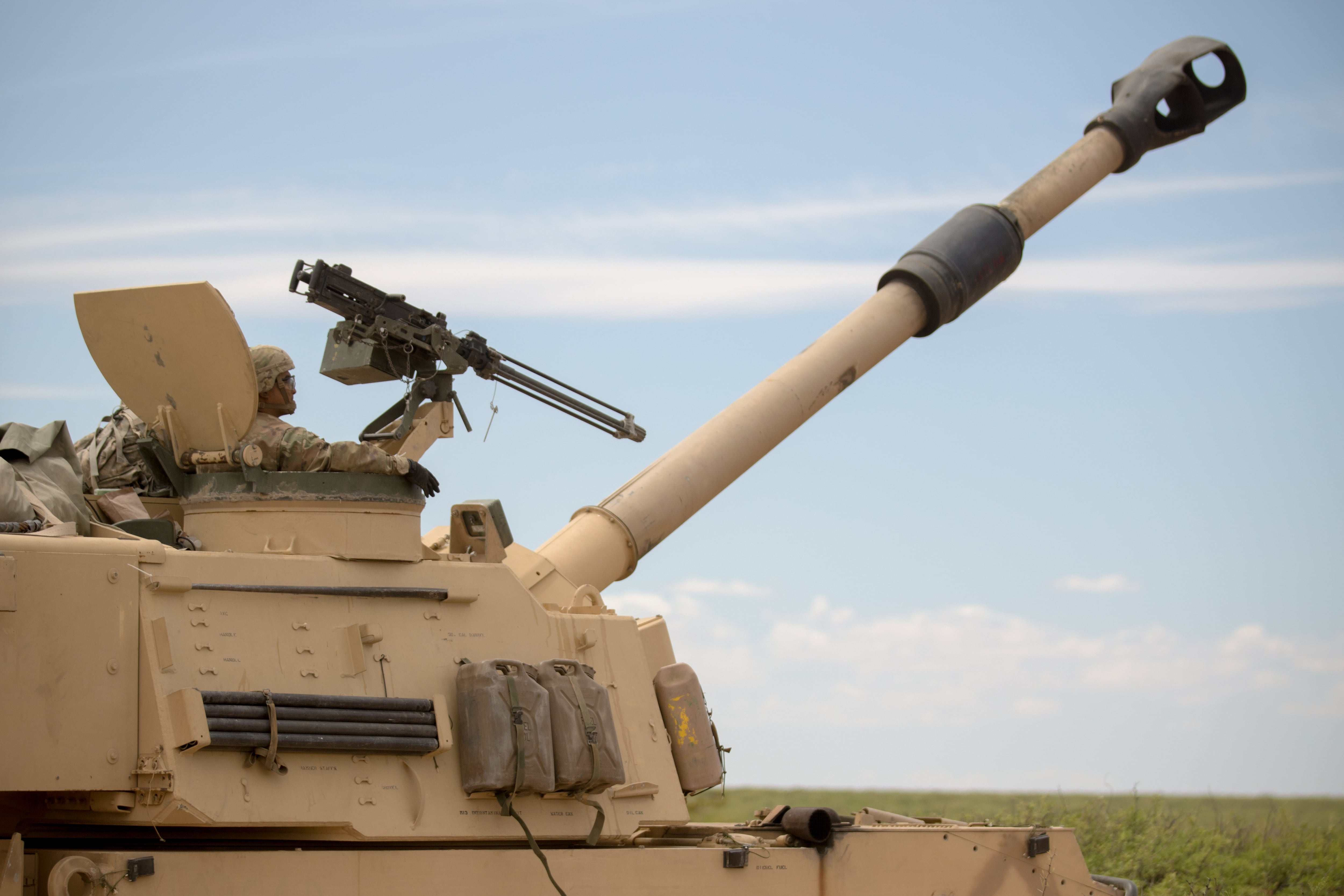The head of the Army’s effort to extend ranges of everything from howitzers to strategic missiles said that recent testing showed adding six feet to the howitzer cannon didn’t affect mobility and the piece can still operate in dense urban terrain.
Col. John Rafferty shared that item along with other updates on the Long-Range Precision Fires Cross-Functional Team’s efforts at the National Defense Industrial Association’s Armament Systems Forum in June.
The current barrel length of the M109 howitzer is about 29 feet. The new 58-caliber barrel that the Army Test and Evaluation Command ran through the urban paces this spring is six feet longer.
“It actually can do just fine in dense urban terrain,” Rafferty said.
RELATED

He did admit that engineers are still working out transmission questions for the Paladin Improvement Program, which is how the Army is making self-propelled howitzers ready for the modern battlefield.
A longer barrel means that the explosion can have contact with the projectile for more time, increasing the pressure and then velocity of the round, which equals greater distances.
Two videos shown at the event demonstrated 155mm firings at both the 70-kilometer and 62-km range with different munitions. Rafferty called those “great for morale” for the team but noted that they’re still trying to resolve the “precision” part of LRPF.
That’s because it’s more about defining accuracy at those ranges, which is still being worked out, he said.
To that end, the Extended Range Cannon Artillery program has work being done on multiple munitions. One is the XM1113, a rocket assisted projectile, and updated requirements for the M5409, the RAP currently in the Army’s inventory.
And to make those rounds hit on target, they’re also working on the Precision Guidance Kit and autoloader upgrades. The PGK has to work at double the distances it did in the past and the autoloaders, while part of past projects, never had to address fuzing projectiles or fuze settings, Rafferty said.
The team is pressing for a technology demonstration of that improved autoloader by late 2021.

But those artillery pieces, while challenging to develop, are only a small piece of the LRPF’s larger portfolio. And all of it is being driven by the Army’s target of having multi-domain operations a realistic way of warfighting ready by 2028.
Much of that is being driven by what’s being seen on multiple fronts. A 2018 RAND report noted that Russian cannons have 50 to 100 percent greater range than current U.S. cannons.
Those objectives include doubling range to beyond 70km for artillery, double rate of fire to six to 10 rounds per minute for those systems and engaging moving targets with those munitions in GPS-denied environments.
They also plan to have an advanced lightweight armament system with a technology demonstration planned for the end of this year.
To get ahead of that deadline, Rafferty said that his team is expected to deliver many of the capabilities by 2023.
“For us, there isn’t a moment to lose,” he said.
At the strategic level, the long-range hypersonic weapon and the strategic long-range cannon complement each other in fires planning.
The hypersonic weapon is expected to travel great distances at high speeds to defeat enemy defenses and hit a mix of hard or strategic targets such as radars, communication vehicles or even area targets with an “exquisite munition” that delivers “tremendous kinetic energy,” the colonel said.
In the fires commander’s back pocket, though, will be the strategic cannon with 1,600-km range. That cannon is being built to fire a “volume of more affordable munitions,” Rafferty said.
By using the two together, the Army expects to penetrate and disintegrate the anti-access, area-denial systems in use by China and Russia.
And it’s not just for the Army.
“We’re not entering strategic fires for the first time since the Pershing (missile) for ourselves,” Rafferty said.
The plan is for the Army to have those arrows in their quiver to open entry for the joint force to then get into the fight.
The colonel declined to discuss recent developments with the Intermediate-Range Nuclear Force Treaty, which limited those missile ranges for Russia and the United States.
He said only that the Precision Strike Missile is being engineered to reach the 499-km range and that is planned for fielding in 2023, also.
Once fielded there are three “spirals” or developments that the Army will quickly seek — cross-domain fires, meaning the PSM can hit maritime or land-based targets; enhanced lethality, which would make the missile able to hit multiple targets with one missile; and range, the potential to reach farther distances if needed.
Todd South has written about crime, courts, government and the military for multiple publications since 2004 and was named a 2014 Pulitzer finalist for a co-written project on witness intimidation. Todd is a Marine veteran of the Iraq War.









